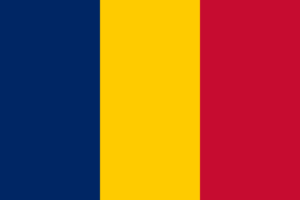History of Chad:
Archaeologists believe that northern Chad’s history dates back to 6000 BC. people lived The Borkow, Enedi and Tibesti areas have archaeological sites dating back to 2000 BC. The oldest civilization was the Thao people. The Thao were later overtaken by the Kanem Empire. Kanem was the most powerful of the empires that formed in Chad.
Europeans arrived in Chad in the late 19th century and French rule began in the early 20th century. In 1920 France assumed full sovereignty and made Chad part of French Equatorial Africa (also known as AEF). Chad remained a territory for many years until it gained independence on August 11, 1960. Chad’s first president was François Tombalbay, leader of the main political party, the PPT.
Unfortunately, Chad’s history since then has been marked by constant civil wars and rebellions.
Information about Chad:
| Capital | N’Djamena |
| Population | 18,278,568 (Source: 2023 worldometer) |
| Major Cities | N’Djamena (capital), Moundou, Sarh, Abéché, Kélo, Koumra, Pala, Am Timan |
| Borders | Libya to the northwest, Sudan to the east, the Central African Republic to the south, Cameroon and Nigeria to the southwest, and Niger to the west |
| Gross Domestic Product (GDP) | $12,704,149,842 (2022 worldometer) |
| Currency | Communaute Financiere Africaine franc (XAF); note – responsible authority is the Bank of the Central |
Flag of Chad:
Chad Economy Key Industries:
Chad Major Industries: oil, cotton textiles, meatpacking, beer brewing, natron (sodium carbonate), soap, cigarettes, construction materials
Chad Agricultural Products: cotton, sorghum, millet, peanuts, rice, potatoes, manioc (tapioca); cattle, sheep, goats, camels
Chad Natural Resources: petroleum, uranium, natron, kaolin, fish (Lake Chad), gold, limestone, sand and gravel, salt
Chad Major Exports: cotton, cattle, gum arabic, oil
Chad Major Imports: machinery and transportation equipment, industrial goods, foodstuffs, textiles
The Geography of Chad:
Total Size of Chad: 1.284 million km² (source: wikipedia)
Geographical Low Point of Chad: Djourab Depression 160 m
Geographical High Point of Chad: Emi Koussi 3,415 m
Climate of Chad: Tropical in south, desert in north
General Terrain of Chad: broad, arid plains in center, desert in north, mountains in northwest, lowlands in south
World Region or Continent of Chad: Africa
Geographical Coordinates: 15 00 N, 19 00 E
The People of Chad & Culture
Chad Government Type: republic
Chad Nationality: Chadian(s)
Chad National Holiday: Independence Day, 11 August (1960)
Chad Independence: 11 August 1960 (from France)
Chad National Symbol: goat (north); lion (south)
Chad National Anthem or Song: La Tchadienne (The Chadian)
Chad Languages Spoken: French (official), Arabic (official), Sara (in south), more than 120 different languages and dialects
Chad Religions: Muslim 51%, Christian 35%, animist 7%, other 7%
Interesting Facts about Chad:
The official name of the country is the Republic of Chad.
Chad has her two official languages, French and Arabic.
Chad has large gold and uranium reserves.
Chad is also known as the “Tower of Babel”.
This country he belonged to France until 1960.
Chad’s flag design is based on the French flag. The goat and lion are the national symbols of Chad.
The country has also experienced 30 years of civil war.
The country is named after Lake Chad. Amazingly, this lake is the largest wetland in Chad and her second largest in Africa.
In the world he is also the 17th largest lake.
Chad is her 21st largest country in the world.Due to its proximity to the desert, the country is also called the “Dead Heart of Africa”.
It is the fifth largest country in Africa by area. Islam arrived in the country in 1085. More than 200 of her ethnic groups live in Chad.
The United States is one of Chad’s largest investors.
Bilibili (millet beer) and fruit juices are traditional drinks of Chad.
Due to Chad’s landlocked location, shipping costs for imported goods are high. Chad became independent from France on August 11, 1960.
The Chadians use kakaki, long metal trumpets, in traditional ritual music. This instrument symbolizes power and is always played by men.
The Tibesti Mountains host some of the best camel races in the world.
Chad gets its name from Lake Chad on the western border of the country. The word “tsade” means “large body of water” or “lake” in some indigenous languages.
Chad’s Zakouma National Park is home to the ‘Big Five’ wildlife of rhinos, lions, leopards, elephants and buffalo. With the introduction of rhinos to the park in 2018, Zakouma became the closest ‘Big 5’ destination to Europe.
The best time to visit Lake Chad is he from August to December. This is the time when the lake is at its highest, giving you the chance to see crocodiles and hippos.


